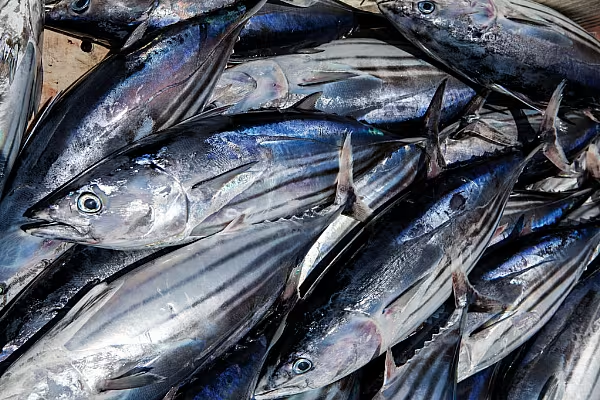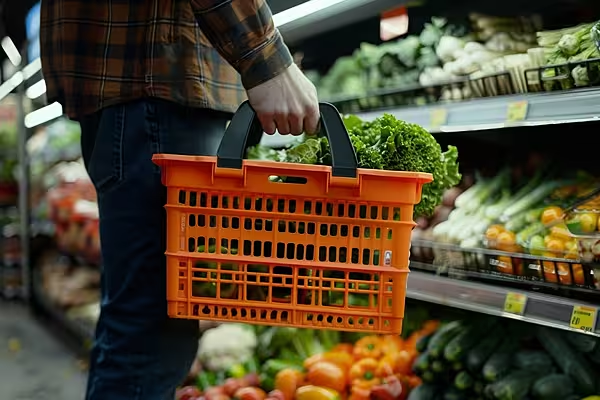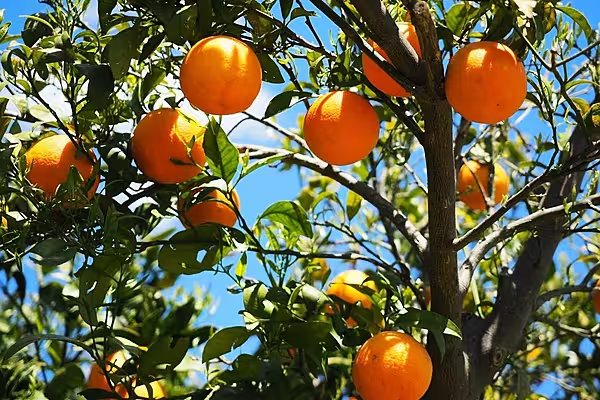As summer temperatures rise, Nick Peksa examines trends in tuna, including the effect of climate on the fishing industry. This article first appeared in ESM’s July/August 2024 edition.
As the mercury rises in Western Europe, thoughts inevitably focus on the summer holiday period. For those wanting to look fabulous on the beach, tuna is an excellent go-to food product. Tuna fish is packed with nutrients, rich in protein, and low in fat, making it an excellent addition to a balanced diet.
However, tuna is not just for summer. According to the State of World Fisheries and Aquaculture 2024 report by the UN’s Food and Agriculture Organization, commercial tuna and tuna-like species dominate the world’s wild fishery sector.
In 2022, marine capture fisheries produced a total of 79.71 million tonnes of seafood, with finfish, including tuna and tuna-like species, accounting for 85% of these marine landings.
Skipjack Prices - Thailand
In March, the world’s largest tuna-processing hub – in Bangkok – experienced a significant bottleneck, as reefer carriers queued to discharge their tuna cargo, causing a further depression in skipjack prices. This was driven by an unusually high supply of skipjack from the Western and Central Pacific Ocean (WCPO).
It has been three years since the skipjack price last dropped below $1,400 (€1,309) per tonne. By May, the price of skipjack in Bangkok began to recover, with contracts for skipjack tuna concluding at higher price levels.
In June, skipjack prices continued to climb in Bangkok. Low catches and a fishing closure in Mauritius contributed to the expectation that the supply of raw material may reduce in the near future. Buyers and sellers are negotiating prices at around the $1,500-/€1,503-per-tonne mark, with spot prices achieving $1,475 (€1,379) per tonne, marking a 9% increase on May prices.
Although many Bangkok processors have full inventories and their order books filled until September, larger canneries continue to purchase as needed. According to traders, boat owners are asking for $1,700 (€1,590) per tonne for current catches, due to poor fishing conditions.
The three-month Western and Central Pacific Fisheries Commission (WCPFC) fish-aggregating devices (FAD) ban, which began on 1 July, is anticipated to significantly reduce purse seine catches, prompting canners to secure deals before the supply shortage drives prices even higher.
Historically, the value of skipjack in Bangkok tends to increase between June and July, suggesting that more price increases are on the horizon.
Skipjack Prices - Ecuador
On the other side of the world, in Ecuador (the Manta processing hub), skipjack tuna prices have been under significant pressure, due to high volumes of landings at the port.
In early May, the price for frozen whole round skipjack dropped to $1,375 (€1,286) per tonne – a 5% decrease from April. Despite good fishing conditions in the Eastern Pacific Ocean (EPO) and full cold stores, this oversupply has caused delays in unloading raw materials.
By early June, prices continued to fall, with larger canneries securing skipjack at $1,300 (€1,216) per tonne and smaller canneries paying slightly more. These current prices are notably lower than those of the past three years.
The continued excellent supply, including a 46% year-over-year increase in captures by the Ecuadorian fleet in the first quarter of 2024, has led to processors operating at full capacity, and only purchasing what can be processed daily.
The future of skipjack prices in this region will depend on whether the favourable fishing conditions in the EPO persist, therefore, water temperatures need to be considered.
Water Temperatures
Sea surface temperature (SST) is a crucial factor that affects tuna fishing. Globally, SSTs, particularly between 60° south and 60° north latitude, are currently 0.7 degrees Celsius above the average measured between 1982 and 2011.
This increase in temperature influences tuna behaviour, prompting them to seek cooler waters. As temperatures rise, tuna and other species are forced to relocate, affecting their migration patterns, prey availability, and, consequently, fishing activities.
In recent weeks, the waters in the Eastern Pacific Ocean have been registering higher temperatures, paving the way for the El Niño phenomenon and marking the end of a prolonged La Niña event. These conditions have been especially pronounced around the Ecuadorian coast, where sea surface temperatures were approximately 2.23 degrees Celsius above the region’s average for this time of year.
Could this be the end of bountiful tuna harvests in Ecuador?
Ending Thoughts
The article started with a comment about the temperature rising – a couple of weeks ago, during a lecture on climate change, it became evident that we are at a critical juncture regarding our planet’s climate. The path we choose will shape the future of our world.
Immediate and decisive action is essential to reducing greenhouse gas emissions, and the transition to renewable energy sources is vital. Industries, regardless of the sector, need to implement sustainable practices, and, collectively, we need to look after our natural resources.
The stress on our planet is already affecting food supplies – could this now filter into the oceans and affect tuna catches? As the mercury ever rises and you plan your summer break, have you considered how to make it carbon-free?
For more information, contact nick.peksa@cost-insights.co.uk.














